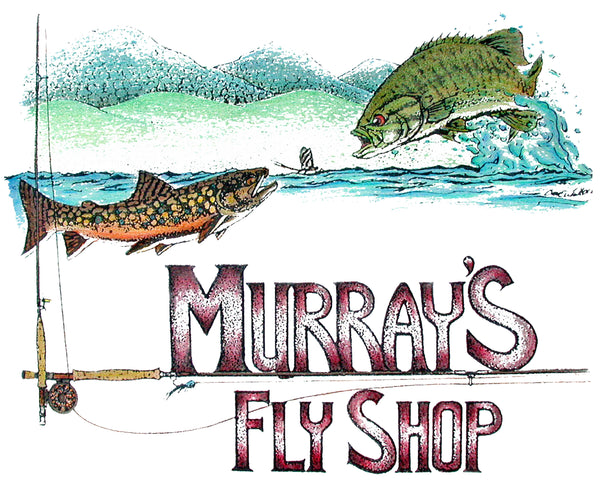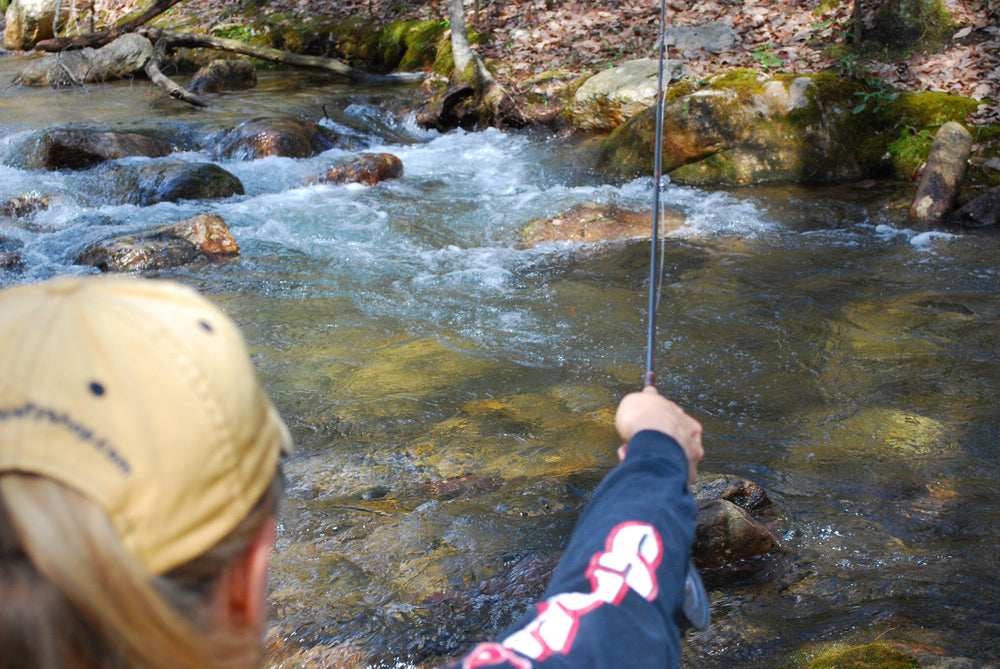
Mountain Trout Fishing
by Harry Murray
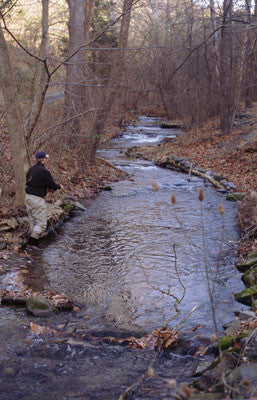
In early March the mountain trout streams in Virginia are starting to become warm enough for the trout to begin feeding.
The Epeorus pleuralis mayfly nymphs are growing rapidly and the trout feed heavily on them just below the riffles and in the upper sections of the pools. Fishing a Mr. Rapidan Bead Head Nymph size 14 upstream dead drift on a Murray's 9ft 5X Trout Nymph Leader with its built in S.A. Indicators is an excellent way to catch many trout.
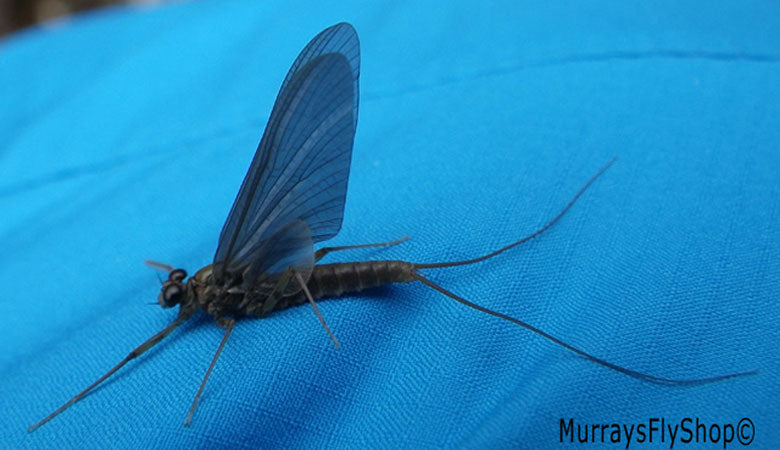
By the middle of March some of the duns begin hatching. This is one of the few mayflies that pops its wings close to the streambottom and swims to the surface of the stream with its wings out. In order to duplicate the appearance of this natural, I developed the Mr. Rapidan Emerger size 14 with its wings extended back over the front of the flies body. I fish this upstream just below the riffle and in the upper section of the pool using a slow fly-lifting action to mimic the emerging action of the Epeorus mayfly. From mid afternoon until dusk many of these mayflies hatch into the adult dun when I catch many trout on a Mr. Rapidan Parachute Dry size 14.
This hatch continues until the middle of April and on many streams this is the heaviest hatch.
The Paraleptophlebia adaptiva (Blue Quill) mayflies start emerging the third week of March and continue until late April. This is well matched with a standard Blue Quill Dry size 16. This is a heavy hatch on many streams but it is very fragile and cold air temperatures can make it difficult for the duns to dry their wings and fly off the surface of the stream. When this happens they flop their way to the streambank. On cold days I've seen great numbers of them resting on the dry banks waiting for their wings to dry so they can fly up to the tree limbs. Frequently there will be so many of them resting on the bank I have to be careful where I walk so I don't step on them.
The Stenonema vicarium (March Brown) mayflies start hatching in mid April and last until mid May. My favorite flies to fish this hatch are the Mr. Rapidan Parachute Dry size 14 and Murray's Brown Drake Dry size 14. In fact, this hatch and the Epeorus pleuralis mayfly hatch are the two hatches I developed the Mr. Rapidan Dry Fly to match. Frequently as I'm fishing up a stream at this time of the year I'll spot a disturbance in the water close to the streambank. I'll drift my Mr. Rapidan Parachute Dry through that area several times and not get a strike before I realize that trout is feeding on the natural march brown nymphs. What is happening is that many of these nymphs that live in midstream undergo a mini-migration to the shallows to emerge into the duns there. The nymphs exposed in this way are easy pickings for the trout. Once I realize what these trout are doing I drift a Mr. Rapidan Brown Soft Hackle size 14 through that area and it usually takes the trout.
Frequently these first three hatches will be on at the same time so you can see why April is my favorite month to fish Virginia's mountain streams.
The Stenonema fuscum mayflies come next and the hatch can last from late April until late May. My favorite fly to match this hatch is the Spirit of Pittsford Mills Dry size 14. The duns hatch from mid afternoon until dusk and the spinner fall is the last two hours of daylight. This same dry fly is very effective for both the duns and the spinners so when I realize this hatch is underway I just put a Spirit of Pittsford Mills Dry size 14 on my 5X leader and stay with it.
The Stenonema canadese mayfly comes off next and lasts from early May to late May. Good dry flies for this hatch are Murray's Professor Dry, Murray's Yellow Drake Dry, and the Light Cahill Dry all in size 16. The trout rise well to these dry flies. However, one of the finest anglers I've ever known said he caught more large trout on an underwater fly such as the Mr. Rapidan Soft Hackle, Brown size 16 than he did on the drys even in the peak of the hatch, and he usually caught more large trout then the rest of us.
From mid May until mid June the Brachycentus caddisflies come off. The Mr. Rapidan Olive Delta Wing Caddis size 16 is a great match for this hatch. From late afternoon until dark I see the greatest number of these flies. Some days I do best with a dead drift presentation. However, frequently a slight twitching fly-action brings the most strikes.
The Isoperlia bilineate (Yellow Sally) stoneflies start showing up on the mountain streams in late April and can last until late June. The Murray's Little Yellow Stonefly Dry size 16 and Shenandoah Yellow Sally size 16 are good matches for this hatch. I seldom see the numbers of these on the stream as I do some of the mayflies. However, I catch many trout on these drys by drifting them over their feeding stations in the tails of the pools and beside the moss-covered boulders.
Sulphurs | Ephemerella Dorothea
The Ephemerella dorothea (Sulphur) mayflies normally start hatching in mid May and last until late June but I see them later than this on a few of the streams. The duns come off from mid afternoon and last until dark and the spinners come back the last two hours of daylight. This can be a very heavy hatch on some streams and since both the duns and spinners are on the water the last hour of daylight you can see many rising trout. One evening when my son Jeff and I camped beside a small remote stream int he Blue Ridge Mountains we counted eleven trout feeding on sulphurs in a long pool just above our tent.
My favorite dry flies for this hatch are Murray's Sulphur size 16 and 18 and Shenk's Sulphur size 16 and 18. The streams are getting low by this time of the season so I always fish my Sulphurs on a Classic 9ft 6X Leader.
Which Fly Rod works best?
My favorite fly rod for fishing mountain trout streams is the Murray's Mountain Trout Rod. This rod which is built exclusively for me by the Scott Fly Rod Company is 6ft 10in long and it breaks down into 3 pieces. It balances with a WF-3 Fly Line. The tip is very light which enables us to get great accuracy and delicacy. It is capable of casting flies from size 24 midges up to size 8 nymphs. I like single action reels that weight 4oz. or less that have a very light starting drag. My favorite fly line for this outfit is the Scientific Anglers Mastery Trout WF-3-Floating line. The leader for fishing mountain trout streams is very important. In our "On The Stream" Mountain Trout Schools" and in our personal fishing we have found that the Murray's Classic Tapered Leaders (either in 7 1/2 ft or 9ft) that taper down to 5X or 6X present the flies very accurately and delicately.
This mountain trout fishing is a very exciting way to start the season. And once it is mastered you will realize it is the cornerstone of all serious trout fishing because you are learning to evaluate the natural trout foods and how to match them with your flies.
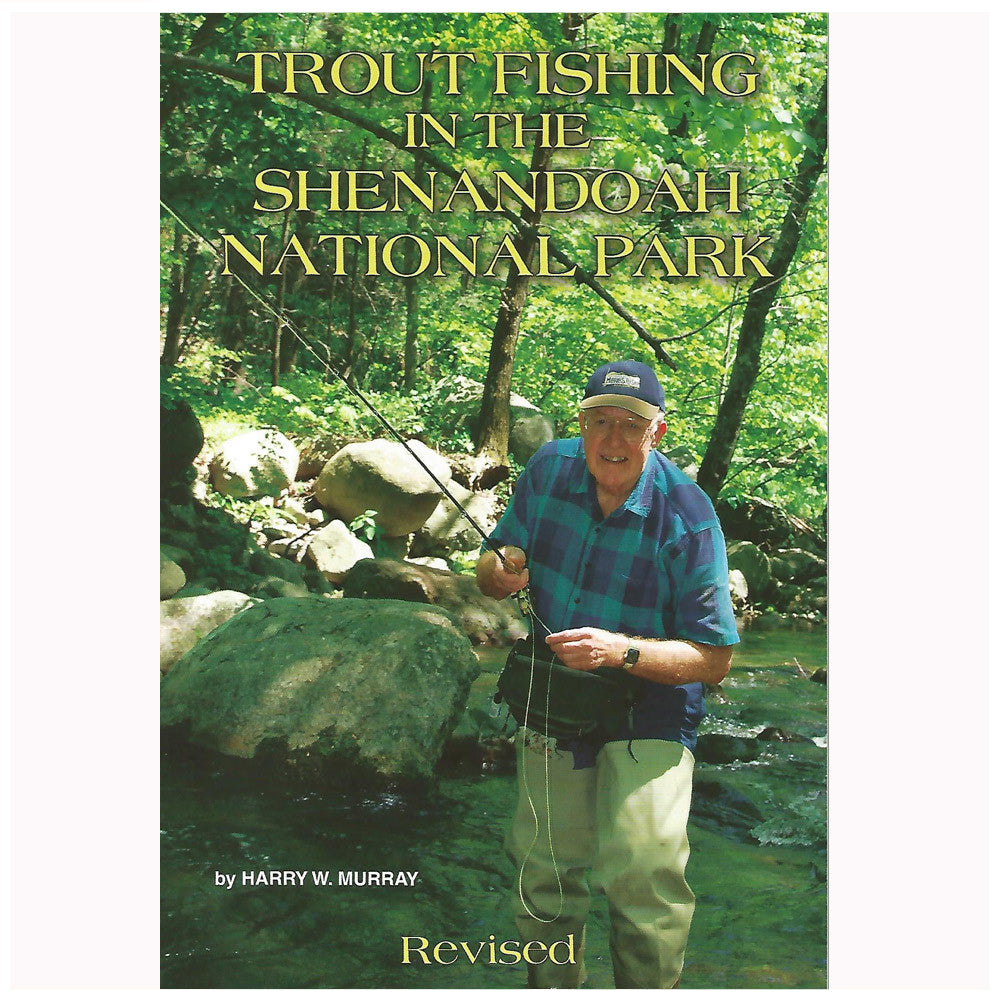
For more information, detailed access to the streams, hatch charts, and many more specifications on the trout streams in the Shenandoah National Park, check out my book Trout Fishing in the Shenandoah National Park. We also offer Guided Trips and On-the-Stream Schools on the Mountain Trout Streams.
-
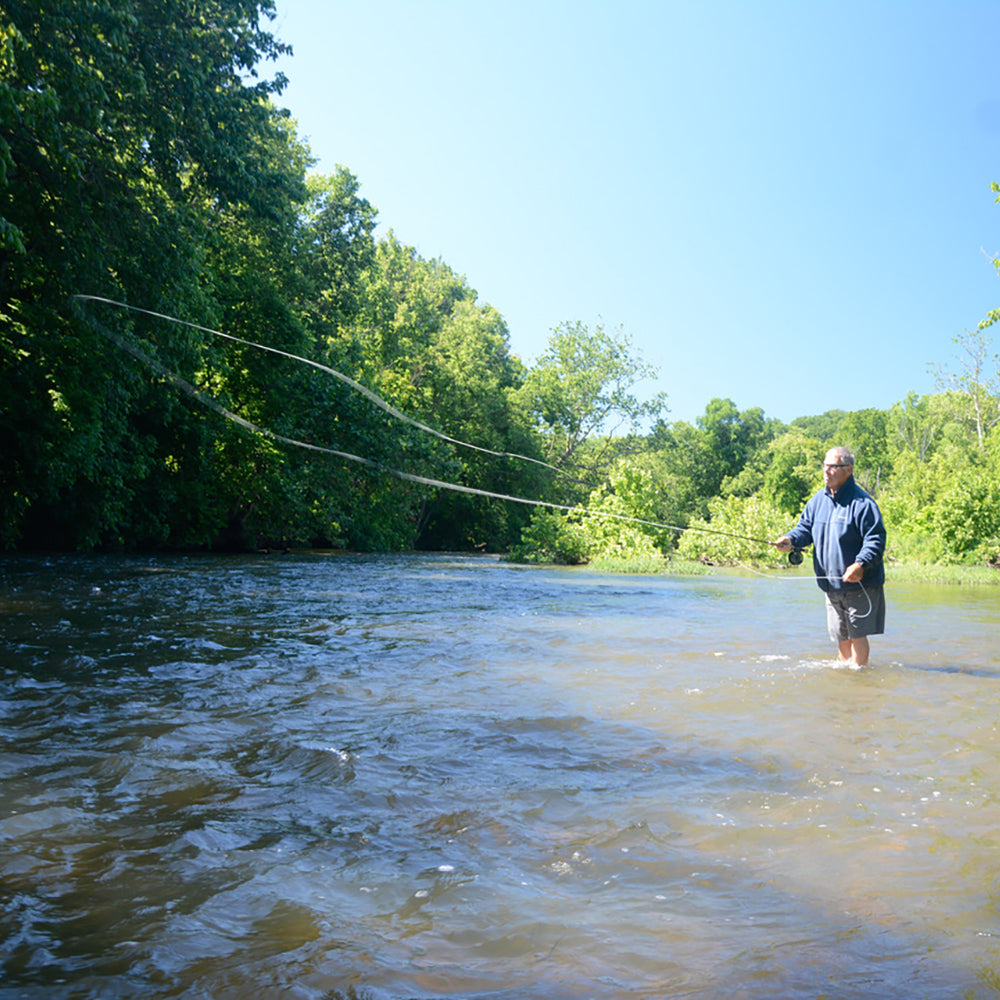
Learn Fly Fishing at Murray’s Fly Shop: Classes, Workshops & Schools
Welcome to Murray’s Fly Shop – Your Fly Fishing Learning Hub At...
-
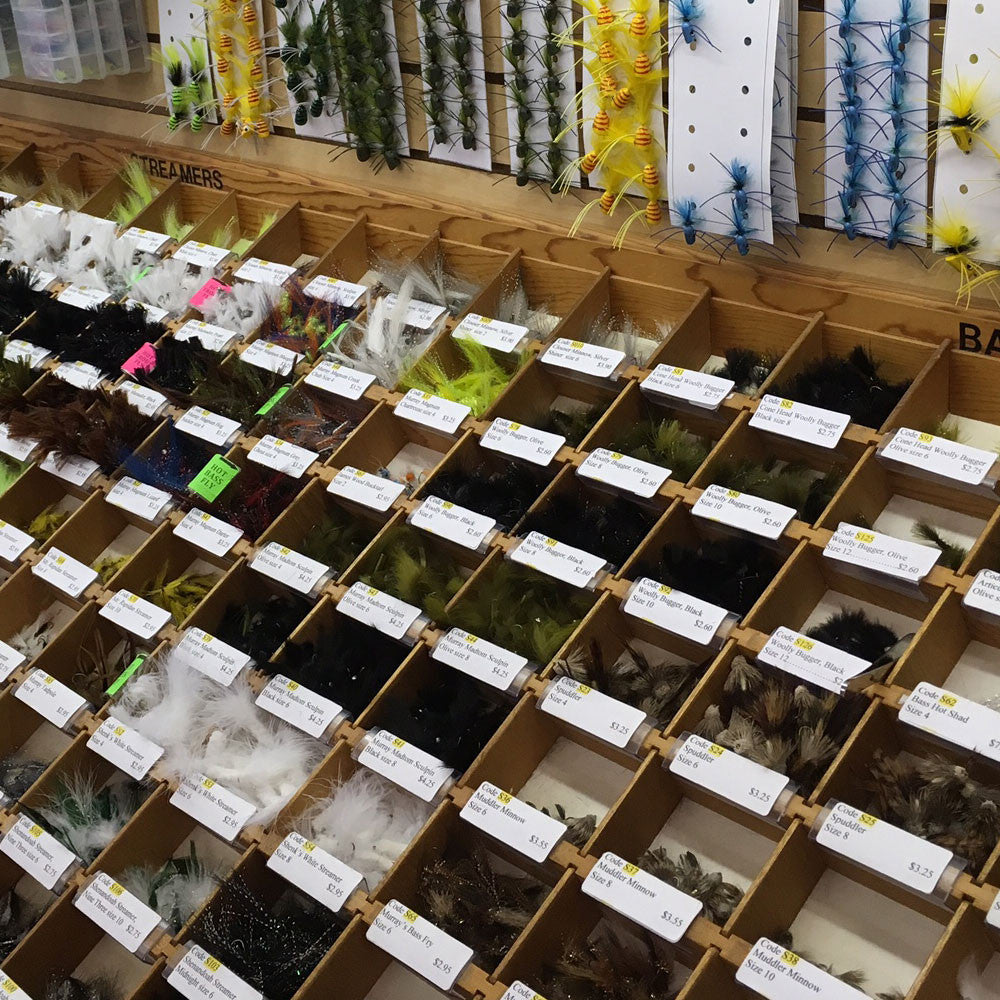
Featured Flies of the Month
Harry Murray's recommended fly list for this time of the year. (April...
-
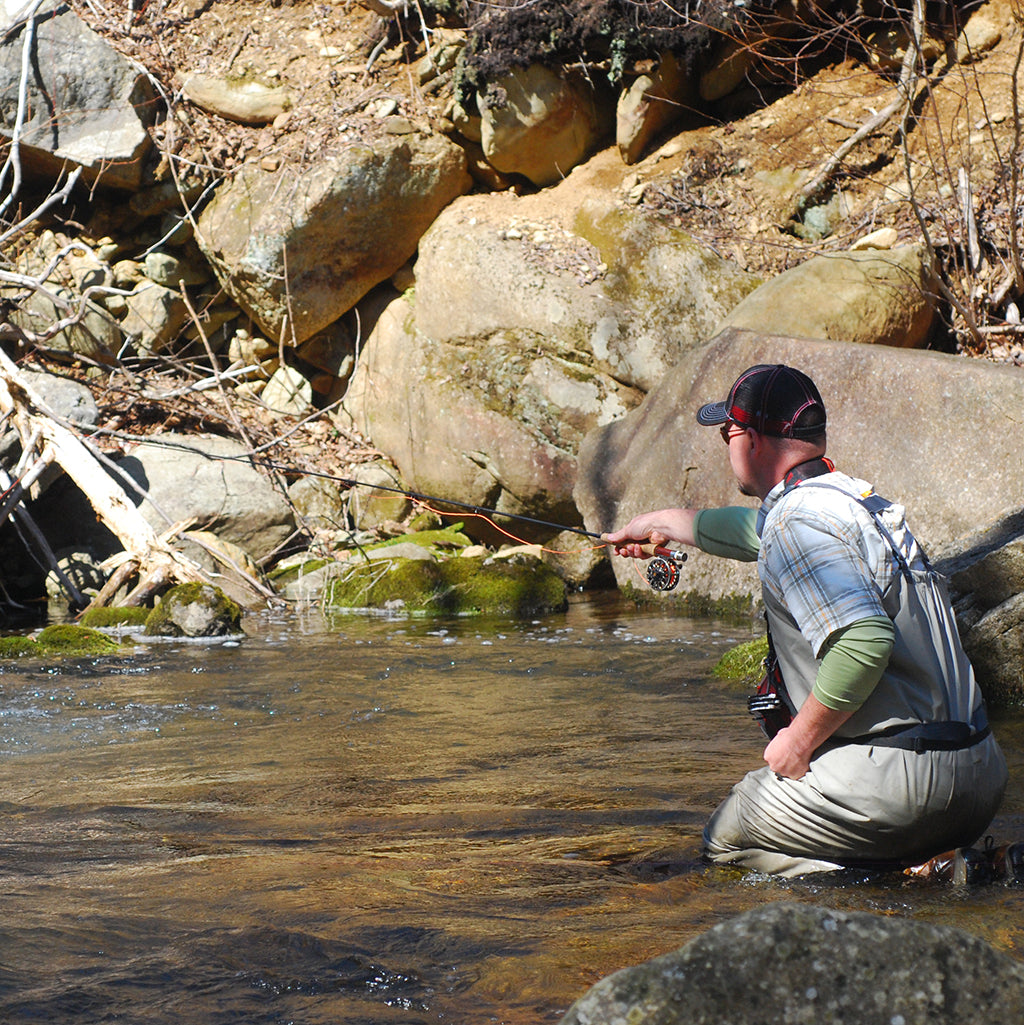
Small Trout Stream Fly Rod and Reel Outfits
If you enjoy fishing the smaller trout streams in the east or...
